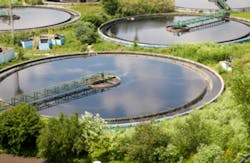Xylem technology to support Chesapeake Bay sustainability
BALTIMORE — Sept. 2, 2015 — The city of Frederick awarded Xylem Inc. a contract to provide advanced treatment technology to an existing wastewater treatment plan, according to a press release.
The technology will help improve water quality in the Chesapeake Bay with nutrient removal, noted the release. The city contributes to the Chesapeake Bay watershed, which is impaired because of an abundance of nutrients, which can fuel algal bloom growth.
"The Chesapeake Bay area is a unique ecosystem that needs to be protected," said Marc Stachowski, deputy director of public works for the city, in the release. "It is our goal to comply with the requirements of the Chesapeake Bay Initiative Enhanced Nutrient Removal program and, as part of this process, the city is converting a key element of its water treatment process from chemical (chlorine) to ultraviolet (UV) disinfection. Xylem is supporting this project by developing innovative and sustainable ways to reduce the levels of nitrate, nitrogen and total phosphorus in the water before it is discharged into the Chesapeake Bay."
Operators for the facility will receive training and support from Xylem to help with the transition from chlorine to UV disinfection, reported the release. Xylem’s technology will reduce nitrate, nitrogen and total phosphorus levels.
"We are pleased that our technology and expertise will support the long-term sustainability of this important waterway," added Greg Claffey, Xylem’s director of treatment sales for North America, in the release. "By switching from chlorine to UV disinfection, the City of Frederick will reduce the disinfection by-products going back into receiving streams. Furthermore, the removal of chlorine makes the site and the surrounding community a safer place to live and work."
You can find the entire release here.
